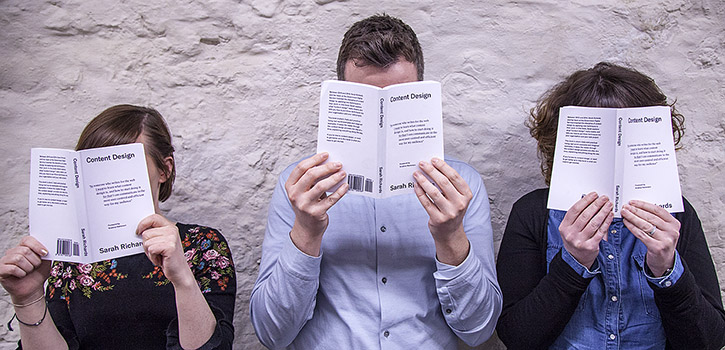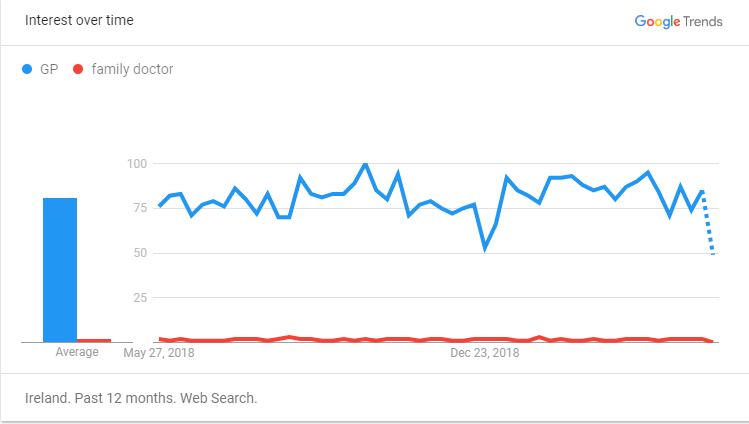Published by Brian Malone, Content Manager

Web publishing can be quick and easy. You can copy and paste some text and have it online in seconds. But creating content that users need and will use takes time, skill and iteration.
Content design is a systematic, evidence-based discipline which guides us, as content designers, to make great content. It’s an approach that helps us to meet our users' needs in the most effective way possible.
For us, that could mean creating content that explains how to apply for a medical card or how the health service was affected by storm Ophelia.
Where it began (GOV.UK)
GOV.UK has set the standard for what public sector digital services can and should be. The former head of content at GOV.UK, Sarah Richards, wrote the book on content design - essential reading in our office.
We’ve also been working with Padma Gillen - another ex-GOV.UK head of content design. Thanks to Padma, we are now certified in content design and agile content production.
We also visited the GOV.UK content team last year - an inspirational trip that has informed a lot of our work.
Watch: Padma Gillen introduces the principles and practice of content design.
Our content guide
The HSE content guide is based on content design principles. It empowers us to make the right decisions when we’re writing and editing content. It's like a style guide, but more than that, it explains our entire approach to creating user-centered content.
User research and user stories
Our process always begins with research. This could include surveys, user interviews or observing how users behave on our site.
We also consult with our colleagues in HSE Live. This is a goldmine of information for our content projects where we can see what kinds of queries people are asking on phone calls, web chat or social media. Our content should be helping to answer these questions.
After research, we write user stories to express the user need. Doing this before creating content helps us to keep on track and stay user focussed.
Structuring content
We have rules for how we structure content, based on how people read online. For example, we put the most important information first and we avoid FAQs. We also make web pages easy to scan by front-loading sentences with keywords. This helps people to quickly decide if the content they land on is actually what they need.
Plain English
Everything we publish must be written in plain English.
Plain English is a style of writing that helps the reader to understand it the first time they read it.
To do this, we:
- choose short, simple words
- write short, clear sentences - 20 words at most
- use the active voice (say ‘We’ll send you a letter’, not ‘A letter will be sent to you’)
- explain technical terms
- don’t use jargon
Research shows that everyone prefers plain English, no matter their reading ability.
Google Trends
Google Trends is a tool that helps us to make sure we’re using the same words everyone else uses in Google searches.
Here’s an example that shows us how most people are searching for 'GP', not 'family doctor'.
Using popular terms, like ‘GP’ in this example, is especially important in page titles and headings - users are scanning these and search engines are crawling them.

Testing content
For our core content - the really important stuff that people rely on - we need to test regularly to ensure we are continuing to meet our user’s needs. We can’t publish and forget - content design is an iterative process.
Advising on health: our special responsibility
We provide advice to everyone in Ireland on conditions that affect their health.
We understand that people often come to us when they are sick, worried or frightened.
They might be a commuter on a phone on a packed train or a mother comforting a sick child in the middle of the night.
Research shows that stress affects comprehension. People find it hard to understand information when they are in distress. That’s because stress adds to our cognitive load.
So, we must work even harder to ensure that our content is clear, simple, accurate and trustworthy. It should work for all people in all circumstances.
By following the content design approach, we can fulfil this special responsibility. This is why we care.
We have a lot of work to do to ensure the content on HSE.ie is great. We'll be sharing our progress on this blog.